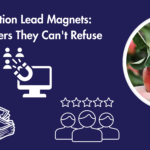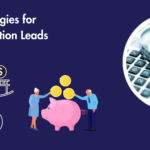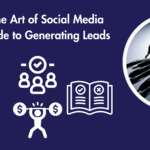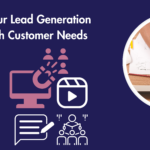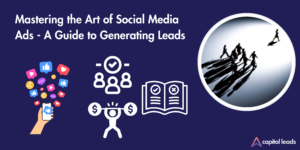What Is Lead Generation?
Lead Generation is the process of finding and attracting people who might be interested in what your business offers.
Think of it like inviting guests to a party. Identify who might be interested in your event (or product/service) and get their contact information. And then reach out to them with an invitation.
In the marketing world, the “invitation” could be special offers, updates, or freebies. The goal is to turn these interested people (leads) into customers who buy your products or services.
Why Is Lead Generation Important for Brands?
Lead Generation is a process that identifies potential customers for a business. This is essential because consistent growth is dependent on attracting new customers regularly. Without actively seeking new potential clients, a business risks stagnation or decline.
Lead generation ensures that businesses reach out to those who have a genuine interest in their offerings.
By targeting the right audience, businesses can optimise their resources. This then leads to more effective marketing and higher sales conversions.
Types of Qualified Leads
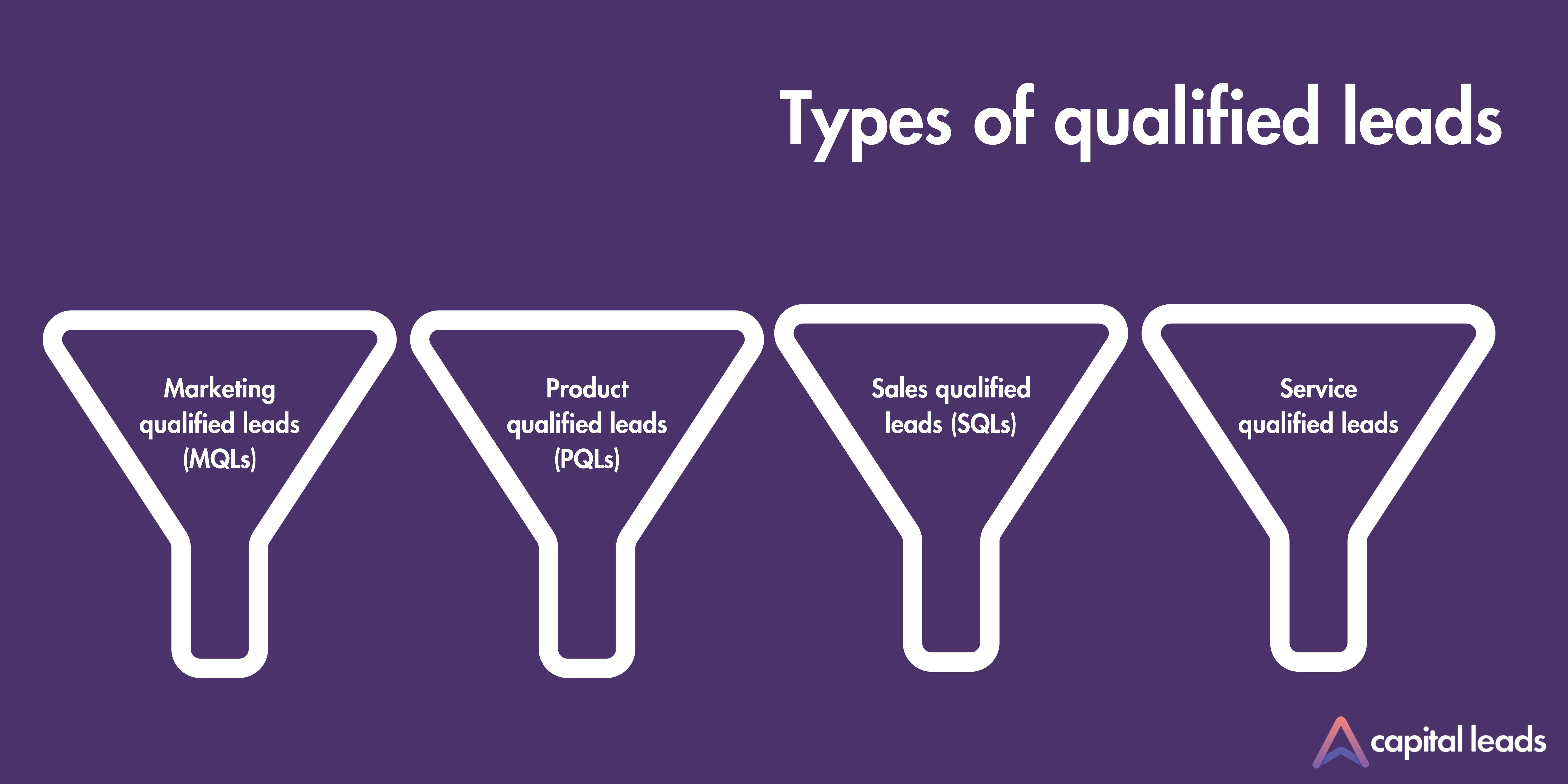
Every business, regardless of its niche or size, thrives on leads. These potential customers are the lifeblood of the business, a constant stream of new opportunities. But, not all leads are created equal.
Understanding the types of qualified leads can help to improve your marketing, sales, and service strategies. Let’s demystify these terms for a better understanding.
Marketing qualified leads (MQLs)
These are individuals who’ve shown interest in what a company has to offer based on their marketing efforts. They might have signed up for a newsletter, downloaded a free eBook, or attended a webinar.
Although MQLs have shown interest, they aren’t quite ready to buy yet. They need a nudge, usually in the form of more information or trust-building activities.
Product qualified leads (PQLs)
PQLs have used a product or service, typically on a trial basis, and have experienced its value. They’ve interacted with the product, and now, they’re more likely to purchase or upgrade.
For software companies, a PQL might be someone using a free version but looking to unlock premium features.
Sales qualified leads (SQLs)
SQLs are those leads who’ve moved past the initial stages of the sales funnel and are ready to be approached with a direct sales pitch. They’ve shown a strong intent to buy and have typically undergone some form of lead scoring to confirm their readiness.
Service qualified leads
These people or businesses that have indicated they’re interested in your products or services. They’ve acknowledged a need and see your service as a potential solution.
What are Cold, Warm, and Hot Leads?
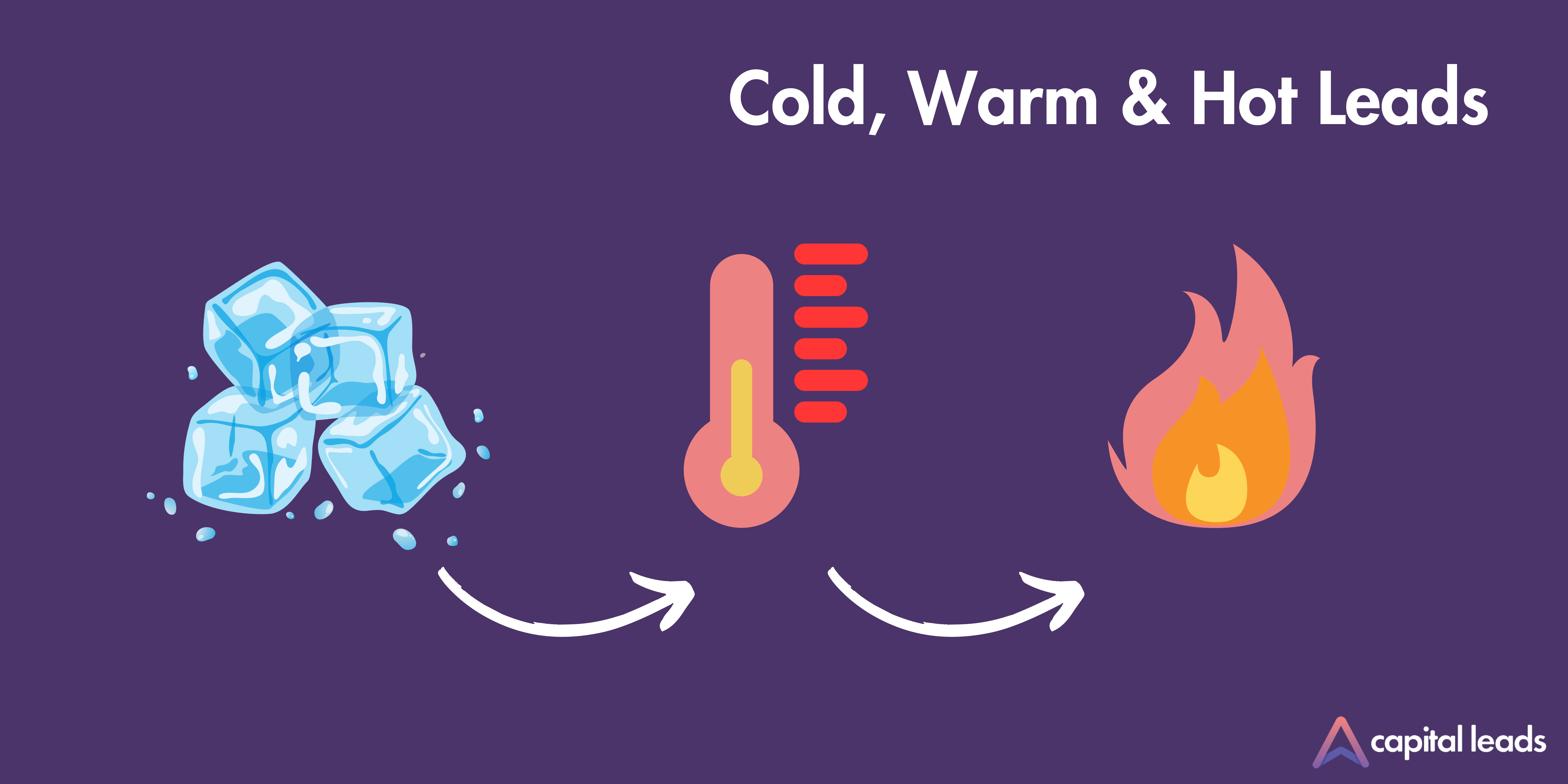
You have probably heard these terms one or two times.Here is a little background.
Handling leads effectively is crucial, especially in the B2B sector where leads are vital to business growth. Without them, there’s a gap in potential customers and that will eventually affect your profits.
Not every potential customer interacts with your brand the same way. Using a one-size-fits-all marketing approach isn’t cost-effective. That’s why we categorise leads as cold, warm, or hot.
What do these terms mean, and what are the differences? How can you tailor your marketing to each group? Let’s dive into the details in this article.
Cold leads
Cold leads are potential customers that may fit your target demographic but haven’t shown any interest in your product or service.
They’re the unknown entities, the ones you reach out to with cold calls or unsolicited emails, hoping to spark an interest.
Warm leads
These are between cold and hot leads. Warm leads have had some interaction with your company. Maybe they clicked on an ad, visited your website, or even filled out a form, but they haven’t taken any significant buying steps. Warm leads are still in the early stages of the sales cycle, therefore you need to nurture them throughout the buying process.
Hot leads
Hot leads are on the brink of converting. They’ve shown a high level of interest, engaged in multiple interactions with your brand, and are often just a step away from making a purchase. They’re the ones you want your sales team to prioritise.
Just because they are hot doesn’t mean they’ll choose your brand or product. This is where your sales team needs to take an active approach to close the sale. If you slow down and do not approach them quickly and effectively, they might choose your competitor.
Categorising your leads into these types can make your processes more efficient and effective.
Marketing Tips to Different Lead Segments
It’s a common misconception that all business leads should be ready-to-buy, or “hot.”
Consider the process of buying a car. Rarely does someone buy the first vehicle they see. They evaluate different models, compare prices, and seek feedback.
Same thing with leads. Every lead needs to be approached based on where they stand in their purchasing journey. Recognising this thing is crucial for effective communication and marketing strategy.
Let’s find out the best marketing strategy for each lead segment.
Cold Lead Marketing
You might think you can just ignore cold leads because it’s “just a cold lead”. If you want to have satisfying future sales, here is where you must start. Although the journey from turning a cold lead into a hot lead can be long and sometimes complex, you’ll appreciate the end result.
When you start with cold leads, your goal is to create demand for your product. These customers aren’t ready to buy, especially if they have never engaged with you before. What you can do is to focus on building brand awareness and creating a strong relationship with the customer. Establish yourself as a helpful advisor or industry leader, so that when the prospect is ready to buy, you will be on the top of their list.
Some ways you can warm up this cold leads:
- Live chat and customer support: Answer questions quickly and provide one-on-one conversations. Don’t use template answers. Your prospect would appreciate it more when they have a real human to help them.
- Educational Content: Share blog posts, whitepapers, or webinars that address common questions or challenges in your industry. This not only positions your brand as a knowledgeable resource but also helps leads understand the value you offer.
- Personalised Email Campaigns: Instead of sending generic messages, tailor your email content based on what you know about the lead. Even a simple acknowledgment of their industry or a specific challenge they might face can make your outreach more effective.
- Engaging Social Media: Regularly post and interact on platforms where your leads spend their time. Share behind-the-scenes looks, customer testimonials, and relevant industry news to engage and build trust.
- Retargeting Ads: Use online advertising to remind leads of your product or service after they’ve visited your website. Retargeting ads keep your brand top of mind and often lead to repeat visits.
- Interactive Tools or Free Trials: Offer tools, calculators, or short-term free trials related to your service. This gives potential customers a risk-free way to experience the value you provide, moving them closer to a buying decision.
Warm Lead Marketing
You will recognize this kind of lead easily. Warm leads show interest in your product or service. They have certain problems and are actively looking for solutions. They have engaged with your marketing channels, like social media or even signed up for your newsletter.
The great thing with warm leads is that you can create an urgency for the purchase. Turn your focus to talking about the product, explaining the benefits and how it will help solve their problems. When you talk about the product, always emphasise how your product can help overcome their challenges.
Some ways you can improve this warm leads:
- In-Depth Webinars and Workshops: Invite them to webinars or workshops that dive deeper into the solutions your product or service provides. This gives them a better understanding and showcases the direct benefits they could gain.
- Exclusive Content: Offer them advanced content that isn’t available to the general public. This could be in-depth case studies, eBooks, or industry reports that highlight the effectiveness of your product or solution.
- Product Demonstrations: Organise live product demos or virtual tours tailored to their specific needs. It allows them to see firsthand how your product works and how it can solve their problems.
- Engage with Personalised Offers: Give them exclusive deals or limited-time promotions. By making them feel valued with a special offer, they’re more likely to move to the purchasing stage.
- Follow-up Calls or Meetings: A personal touch can make a huge difference. Schedule a call or a face-to-face meeting to address any questions they might have. This direct interaction can significantly boost their confidence in choosing your brand.
Hot Lead Marketing
You might feel like you won a lottery when you face hot leads.Hot leads are highly interested and are READY to buy. They left their contact information, signing up for content, and engaging with your business.
These buyers have the budget and need for your product. At this stage, you probably won’t need multiple touchpoints to close the sale. But keep in mind, they can always move on to your competitor – so slow down. Keep hot leads in the line by creating a timeline and thorough schedule for final sales.
Keep in touch with hot leads until the transaction is completed. Once a lead converts, don’t forget about them. Make sure you deliver your product or service properly. You want this lead to transform into your loyal customer. Beside that, they could always recommend you to your next prospect.
Here is some tips to turn your hot leads into loyal customers:
- Deliver Exceptional Customer Service
- Regular Check-ins
- Loyalty Programs
- Engage Through Content
- Ask for Feedback
- Exclusive Offers
- Build a Community
- Personalised Communication
- Stay Consistent
Categorising your leads isn’t just A step in the sales process – it’s a game-changer! Without proper segmentation, it’s like using a one-size-fits-all approach in a tailored world. You risk spending unnecessary energy, time, and resources wooing potential customers who may not resonate with your approach.
Yes, it might mean investing a bit more effort into organising and managing things at the outset, but think of it as setting the stage for a grand performance. Each lead is like an unopened gift, packed with potential. So, rather than chasing them, think of it as building genuine, long-lasting relationships.
Lead Generation Sources
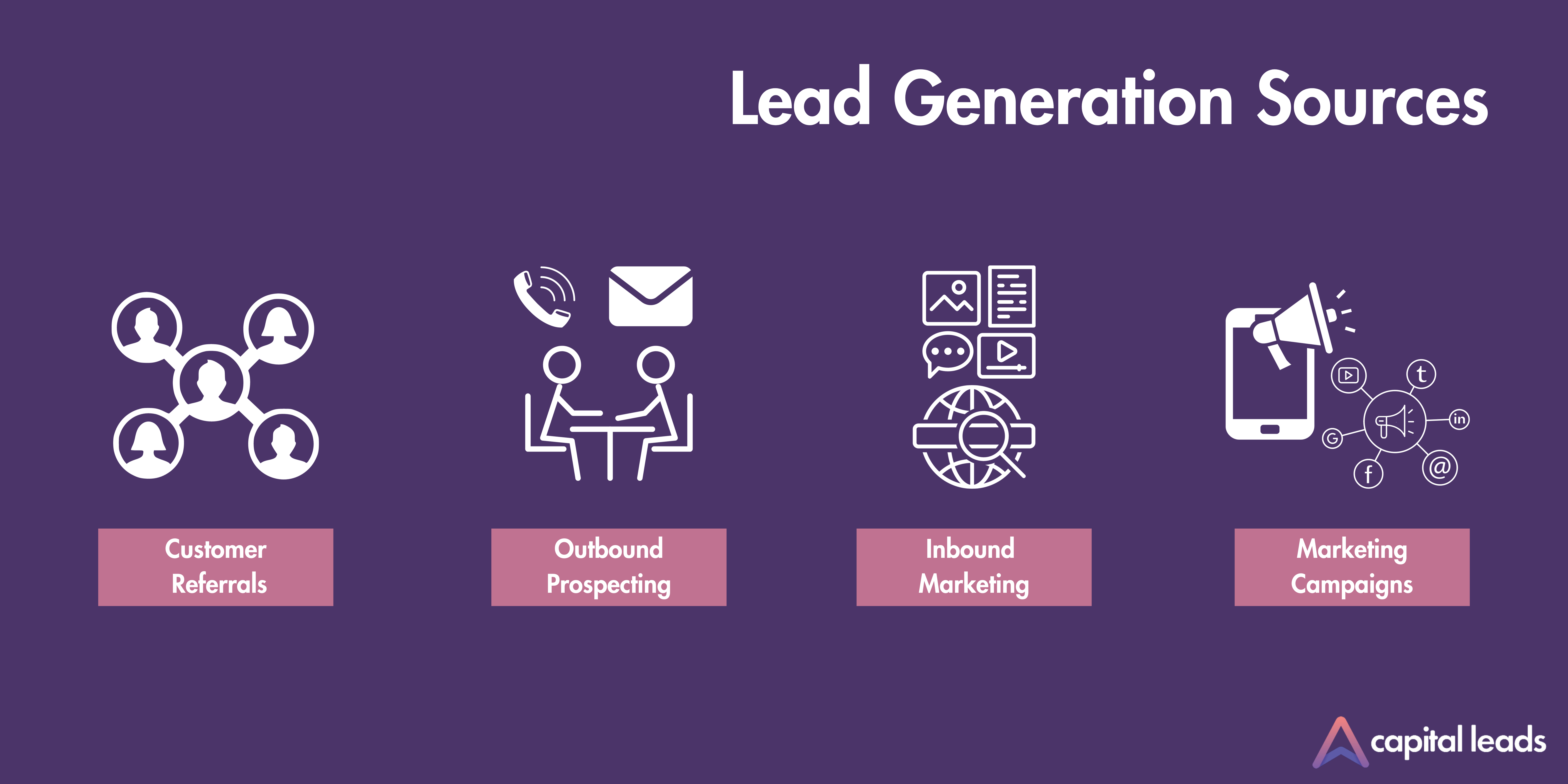
Generating quality leads is a critical step to ensure growth and profitability. The sources from which these leads come is crucial. You need to know where your leads are coming from to maintain the quality and quantity of leads you gather.
Let’s delve into some of the primary sources of lead generation.
Customer Referrals
One of the most genuine forms of lead generation, customer referrals come directly from satisfied customers.
When a customer is happy with your product or service, they’re more likely to recommend you to their network.
These leads are precious because they come with an inherent level of trust. You can encourage a customer to refer to their friends by offering a commission or simply building a relationship with them.
Outbound Prospecting
This is a proactive approach where businesses reach out directly to potential leads. Methods can include cold calls, cold emails, or even face-to-face interactions at trade shows and conferences.
This method takes more work and can feel intrusive, but with the right plan and personal touch, it can be highly effective.
Inbound Marketing
In contrast to outbound prospecting, inbound marketing attracts leads to come to you. You can do it by creating valuable content. Remember to optimise search engines, and engage on social media.
When done right, leads generated from inbound marketing are often more informed and ready to engage because they’ve sought you out.
Marketing Campaigns
These are structured and targeted efforts to promote a product, service, or brand. Campaigns can span various mediums – from digital ads and email marketing to direct mail.
The key is to tailor your campaign’s message and medium to the audience you’re trying to reach. When executed effectively, marketing campaigns can bring in a substantial number of quality leads.
The sources of your leads can influence their quality and your conversion rates. Diversifying your lead generation and understanding the strengths of each source can help your business a lot!
At Capital Leads we focus on generating high quality leads at scale for large growth companies. Providing high quality, data-validated leads using a multi-platform approach.
How Lead Generation Works

Lead generation acts as the bridge between a brand’s offerings and its potential customers.
At its core, the process is simple but strategic, ensuring that businesses can engage and nurture leads effectively. Let’s break down this essential process into straightforward steps.
Awareness
Before you can generate a lead, you first need to get the attention of potential customers. Awareness is all about making your target audience recognise your brand, product, or service.
This can be done through content marketing, advertisements, social media engagement, or even word of mouth. The goal is to position your offering in the minds of potential leads so they’re curious and want to learn more.
Call to action
Once a potential lead is aware of what you offer, the next step is to prompt them into taking a specific action. A Call to Action is usually a clear and concise directive, often found in the form of a button or a link. Examples include “Sign up now”, “Learn more”, or “Get started”.
The CTA should be enticing and provide a clear value proposition, nudging the potential lead closer to becoming an actual lead.
Lead capture
When a potential customer responds to your Call to Action, you need a system in place to collect their information. This is where the lead capture stage comes in.
Typically, it involves a form where the prospect provides details like their name, email, phone number, etc.
The information gathered is invaluable. It allows you to communicate directly with the potential customer. It’s surely further nurturing the relationship.
Important Lead Generation Tools
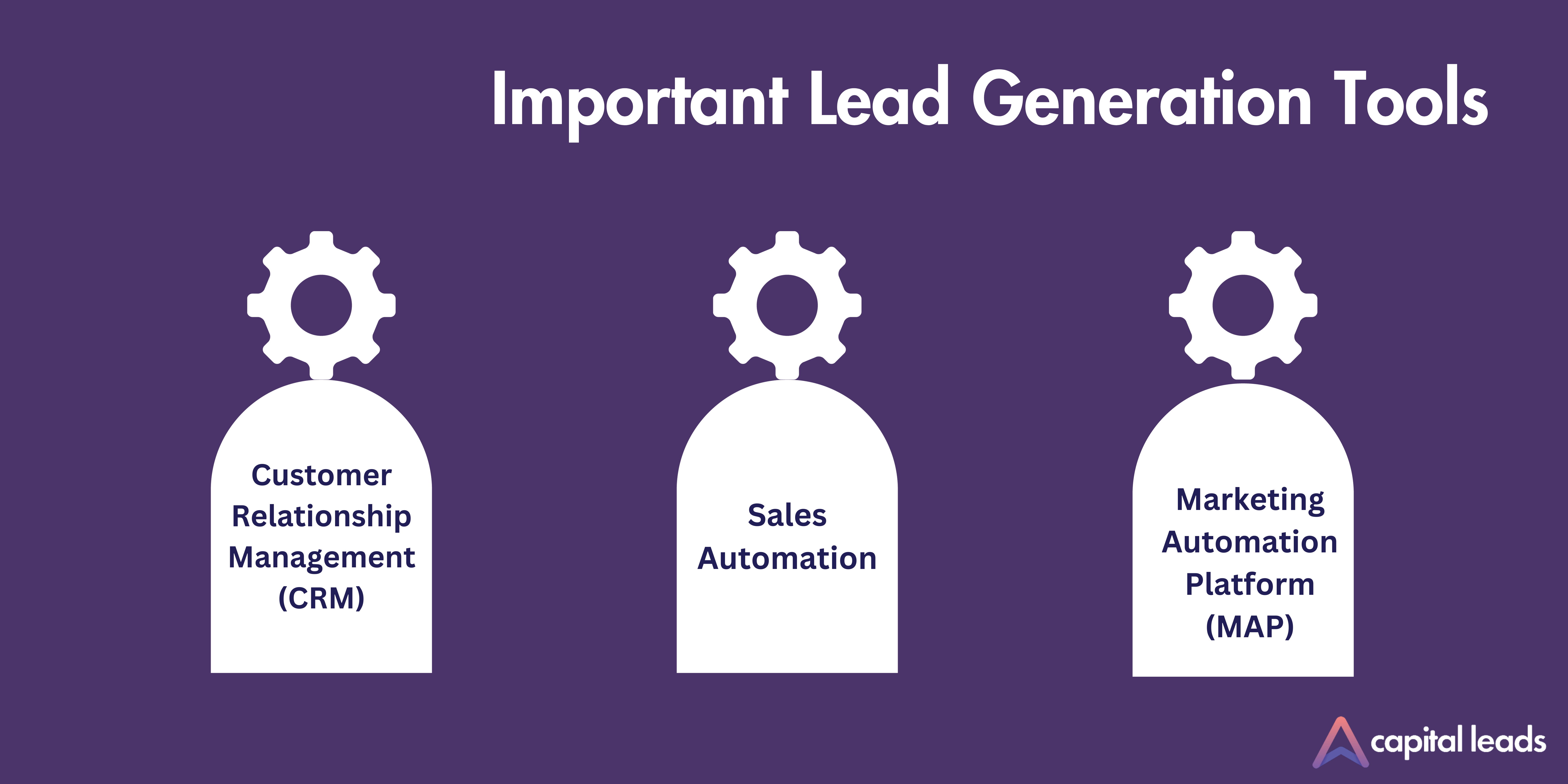
In today’s digital age, businesses have plenty of tools to optimise their lead-generation efforts. Leveraging these tools can dramatically improve the quantity and quality of the leads generated.
Let’s take a closer look at them.
Customer Relationship Management (CRM)
A CRM is a key tool for businesses to handle and study their interactions with customers from start to finish. It gathers information from different places like the company’s website, phone, email, and social media.
The main goal is to build strong ties with customers to boost loyalty and sales. By knowing past interactions and what customers like, businesses can make sure every chat or sale is right on target.
Sales Automation
Time is money, and sales automation tools are designed to save plenty of both.
These tools make sales tasks easier, like reminders, adding data, and ranking leads. This lets sales teams focus on selling. They also make sure no lead is missed by sending reminders or automatic emails when needed.
Marketing Automation Platform (MAP)
A MAP simplifies marketing tasks. It lets businesses automatically send emails, post on social media, and track how users act on websites.
Its key feature is grouping leads by their actions or likes. This lets marketers send content that truly matches each group. With a MAP, businesses can guide leads better, making sure they get the right message at the right time.
With new tech, lead generation has changed. Tools like CRM, sales automation, and MAP are now essential. They help businesses get, connect with, and turn leads into customers effectively.
Different Marketing Channels to Multiply Your Lead Generation
In marketing, it’s essential to know the different ways and channels to reach people for your campaign.
By grouping these ways as ‘inbound’ or ‘outbound’, marketers can plan better and reach their goals. Let’s explore these channels and understand their significance.
Inbound Marketing Channels
PPC (Pay-per-Click)
PPC is a digital advertising model where advertisers pay a fee each time their ad is clicked. It’s a way of “buying” visits to your site, rather than earning them organically.
Email Marketing
One of the oldest digital marketing channels, email marketing is still one of the most effective. By sending targeted messages to subscribers or potential leads, businesses can nurture relationships, promote offers, or share valuable content. With personalised touches, email marketing can deliver significant ROI.
Content Marketing
Content marketing revolves around creating and sharing valuable, relevant content to attract and engage an audience.
This could be in the form of blog posts, videos, eBooks, or webinars. The aim is to position your brand as an industry thought leader and, in turn, drive profitable customer action.
Social Media
Platforms like Facebook, IG, LinkedIn, and Twitter offer businesses a space to engage with their audience.
By sharing content, running ads, or even just engaging in conversations, brands can build a community and drive leads from these platforms.
Outbound Marketing Channels
Influencer Marketing
It’s about partnering with influential individuals in your industry or niche to promote your product or service.
The power of influencer marketing lies in the trust these individuals have built with their audience. A recommendation from them can drive significant attention and lead to your business.
Live Events and Seminars
Even with more online marketing, in-person events like trade shows are still effective.
These events let businesses show products, share info, and talk directly to potential customers. This direct contact can build strong relationships and make sales faster.
Conclusion
Lead generation isn’t just some fancy add-on; it’s the heart of the action. Think of it as rolling out the red carpet for potential customers, setting the stage for what could blossom into booming sales, impressive growth, and fans that stick by your brand. It’s like the exciting kickoff of your very own business success story
Capital Leads has over a decade of digital mastery and a cumulative experience of more than 20 years in sales, we’re not just vendors; we’re your partners in progress.
But we don’t stop at providing quality leads. We’ve ensured our system integrates smoothly with all major CRM platforms. This seamless transition means your sales team can jump right into nurturing these leads without a hiccup.
Ready to supercharge your lead generation efforts? Dive into Capital Leads to explore more, or jump-start your journey to unparalleled leads now. Your sales team will thank you!



